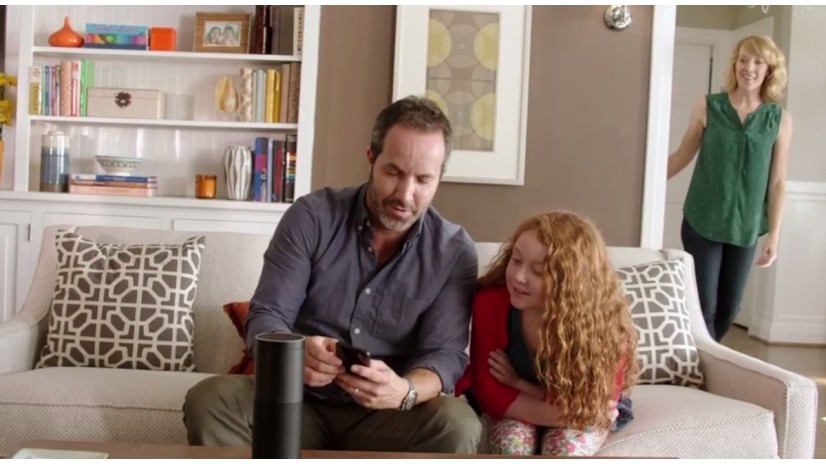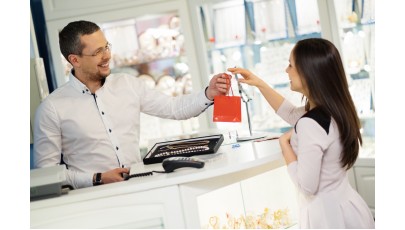Having launched last spring, Amazon's Dash Replenishment Service (DRS) may be young, but it's growing up fast. In fact, it just took another big step recently: Last week, the company announced a new batch of DRS partners and devices, making for a move that could extend the company's reach into homes everywhere.
With DRS, product orders can land in a user's Amazon cart with a mere push of a Dash Button, or automatically through gadgets that integrate with the system—essentially, so they can sustain themselves somewhat by replenishing their own supplies. This appears to be Amazon's approach to smart homes, offering its own take on automation.
The new partner gadgets includes a washer from General Electric, the August smart lock, and, interestingly, laser printers from Samsung, which has its own smart home platform. The devices will be able to sense when they run low on soap, batteries or ink cartridges, and start orders for fresh product supplies on their own.
Amazon's open to partners of all sizes, and interested parties can request more information from the e-commerce giant, which is planning a full roll-out for the fall.
To learn more about why and how they're integrating DRS, ReadWrite checked in with a couple of startups that have already signed on.
DRS, From A Startup Partner's POV
Would-be DRS partners large and small have two choices: incorporate a button into their product design for reordering consumables, or have the reordering managed automatically via a system of sensors and measurements.
Many connected device makers choose the latter—including Thync, a new partner that's working on a gadget that, it claims, is capable of affecting your mood through low-level electrical pulses.
With DRS integration, the unit will be able to offer replacement Thync strips to offer "a reliable, efficient, and convenient service" for users, said Jason Egnal, the company's VP of digital marketing and commercial operations.
Thync has gone all in with Amazon, also signing up for its Launchpad service, which gives hardware startups a streamlined sales channel. "[Launchpad offers] an opportunity to leverage all the benefits associated with selling through Amazon," Egnal told ReadWrite, "as well as receive tailored placement within Amazon.com, and gain access to other cutting-edge opportunities like Dash Replenishment Services."
With Launchpad and DRS, Amazon is fast becoming a one-stop back-end for companies with innovative new hardware to sell—perhaps just in time, given the demise of Quirky. (The inventor's site had been announced as an early Amazon DRS partner.)
For Thync, Amazon's "unparalleled ability to quickly and inexpensively ship product to customers" made the startup jump at the chance to get involved, said Egnal.
Implementing DRS

Amazon promises that DRS support is a simple affair. For developers, it can take as little as 10 lines of code, with simple HTML containers and REST API calls. Addresses, payment methods and billing systems are all handled by Amazon.
Obe—maker of an innovative smart dog bowl—is another new partner. "The DRS code has been straightforward and the documentation is thorough, easy to follow," Obe CEO Hilary Wade told me. "We've been part of the early testing with DRS, making sure that it works well for the most common use cases and can address exceptions too."
With the Obe ProBowl, as soon as your pooch is running low on snacks, the unit automatically puts an Amazon order for new supplies into motion. As with any Dash button or DRS-enabled service, though, manual confirmation is still required.
In other words you won't wake up to a crate of dog food on your doorstep just because of a faulty sensor or an inquisitive toddler. The service merely queues up products in a linked Amazon checkout basket, where they wait for you to hit the Buy button in the Amazon smartphone app or the website.
"Offering greater convenience to our customers is our priority," said Wade. "Amazon DRS makes it easy for connected consumer devices like Obe ProBowl to address one more very common pain point with our product. Not running out of dog food will make a lot of the 83 million dogs in the U.S. much happier!"
Amazon As A Smart Home Platform

This kind of auto-replenishment option makes sense in the broader trend of smart home devices. With lights, thermostats and many other home appliances now connected up to the Internet and fitted with sensors, having them communicate directly with portals such as Amazon is an obvious next step.
Indeed, appliances able to order supplies for themselves is a feature that's been touted since the concept of a smart fridge was first floated.
For Amazon, it's another step on the road to becoming a full-fledged platform, not just an online mall. The journey began with Amazon Associates, which gradually evolved into Amazon Web Services, the cloud-computing package of resources that got the likes of Dropbox and Instagram off the ground.
Now it's not just apps and websites plugging into Amazon's ecosystem, but smart devices too. We don't know yet whether Amazon offers affiliate payments for goods ordered through DRS—the companies we spoke to would not divulge details of their agreements, and Amazon itself didn't respond to a request for comment—but if that's the case, these hardware devices could be partly funded by the consumables they use up.
And let's not forget Amazon Echo, the smart home hub contender looking to tie into as many third-party services, devices and apps as possible. Even if Amazon isn't making all of the gadgets in your future smart home, it wants to be controlling them—and making sure they're well stocked.
Images courtesy of Amazon and Obe





